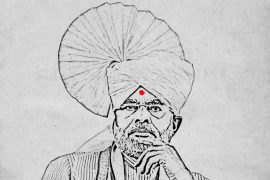“I think I have always respected chess. I just thought I wasn’t smart enough nor patient enough for it,” said Poela Keta, a 21-year-old resident of South Africa who binge-watched Queen’s Gambit during a study break. After watching the TV show, guess what Keta did? She ordered herself a brand-new set of chess.
After Queen’s Gambit aired on Netflix, the popularity of chess surged incessantly, sending the sales through the roof. Chess Bazaar in India noted a three hundred per cent increase in sales the months after the show, but did you know where the game of Chess began?
The history of chess can be traced back to the Gupta Empire (seventh century) in India, when it was known as Chaturanga, meaning four-limbed. Scholars suggest that the term identifies with the army structure of the time, which consisted of elephants, horses, chariots, and infantry. At the time, Chaturanga was played on a board called Ashtapada, an eight-by-eight board with sixty-four squares.
Chaturanga is often mentioned in the great Indian epics, the Mahabharata and Ramayana. A passage from Harshacharitra also mentions Chaturanga. Since Harshacharitra is a record of the early seventh century, it is possible that the game of Chaturanga developed at least in the middle or late sixth century.
The Shahnameh, an epic of Ferdowsi’s Persian poetry, notes that Chaturanga made its way to the Persian empire during the reign of Khusrau Nushirwan (531-579) through an Indian sage. The Arabic writer Ibn Khallikan also notes this legend; however, in his accounts, while the game is credited as an Indian invention, the Persians claim it to be their own.
According to a Persian legend, a sage from India visited Nushirwan and offered him a game he had invented; it represented a battlefield with foot soldiers, chariots, horses, and elephants. The game’s tactics excited the king so much that he asked the sage to demand a reward.
The sage said the board has sixty-four squares; place a single grain on the first square, place the square of the first one in the second, and so on, increasing the value exponentially. Initially, the king thought that the sage was silly for asking something so small but he soon realised that grains from his entire kingdom could not suffice his wish. The king told the inventor that his wish had impressed him even more than the invention of ‘shatranj.’
Chinese literature first introduced the game of chess in the sixth century A.D.; however, it did not acknowledge its Indian origin. According to the literature, the game was invented by a Chinese king. From China, the game travelled to other parts of Asia, including Japan, Korea, Tibet, Burma, Sri Lanka, Java, etc.
The Arabs introduced the game of chess to Europe in the 1200s. The earliest account of chess in Europe is a Spanish manuscript that talks about Arabic chessmen and mentions the king, horse, pawn, alferza (Vazir), alfil (elephant), and roque (chariot).
The game spread from Spain to Italy, into the Byzantine Empire, and soon to France, Germany, and England. Thereafter, the game kept developing, and in 1834, modern competitive chess became visible.
While the world’s attention on the art of chess may have recently sparked with a Netflix hit, it indeed is one of the oldest games enjoyed by the world. The game that presented the four-part army on the board centuries ago has been used for training the art of war in history, and today, it is the benchmark of a genius. From India to Persia, to China, to Europe, and then to the rest of the world, the evolution of chess has contributed significantly to humankind as the most intellectual game in the world.
-30-
Copyright©Madras Courier, All Rights Reserved. You may share using our article tools. Please don't cut articles from madrascourier.com and redistribute by email, post to the web, mobile phone or social media.Please send in your feed back and comments to [email protected]











